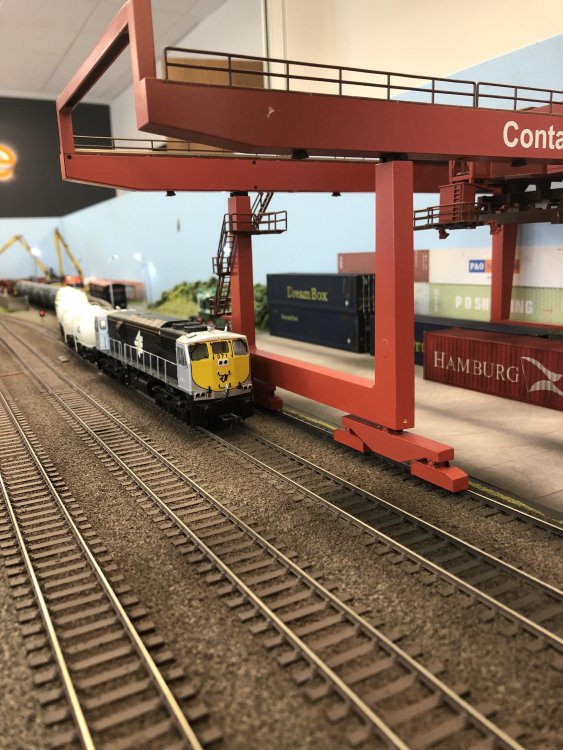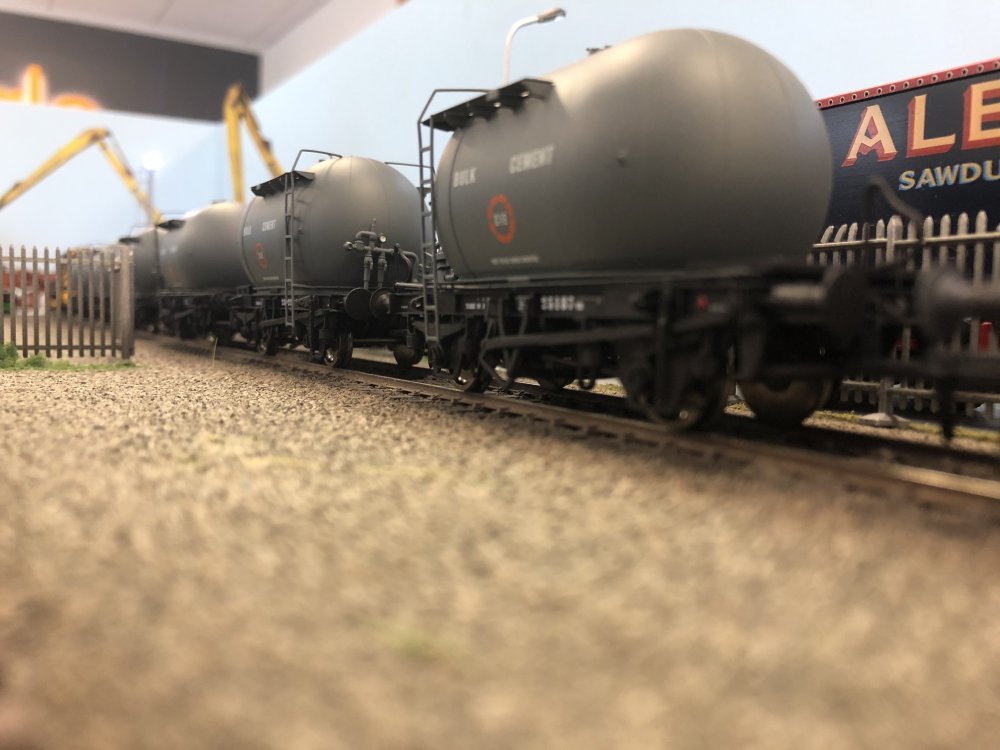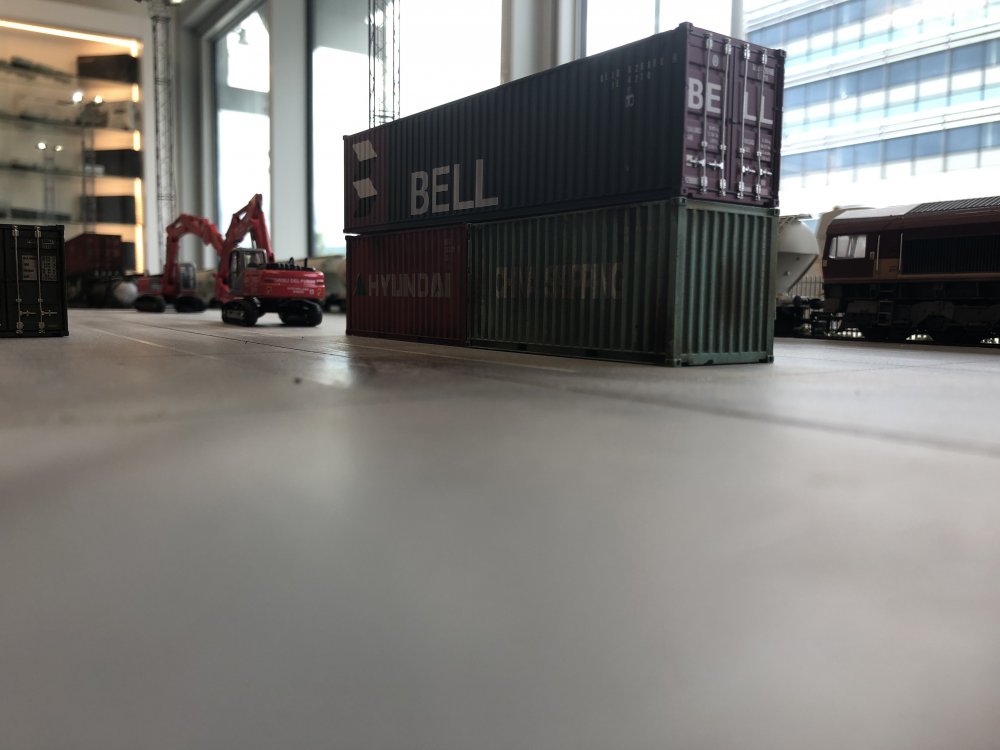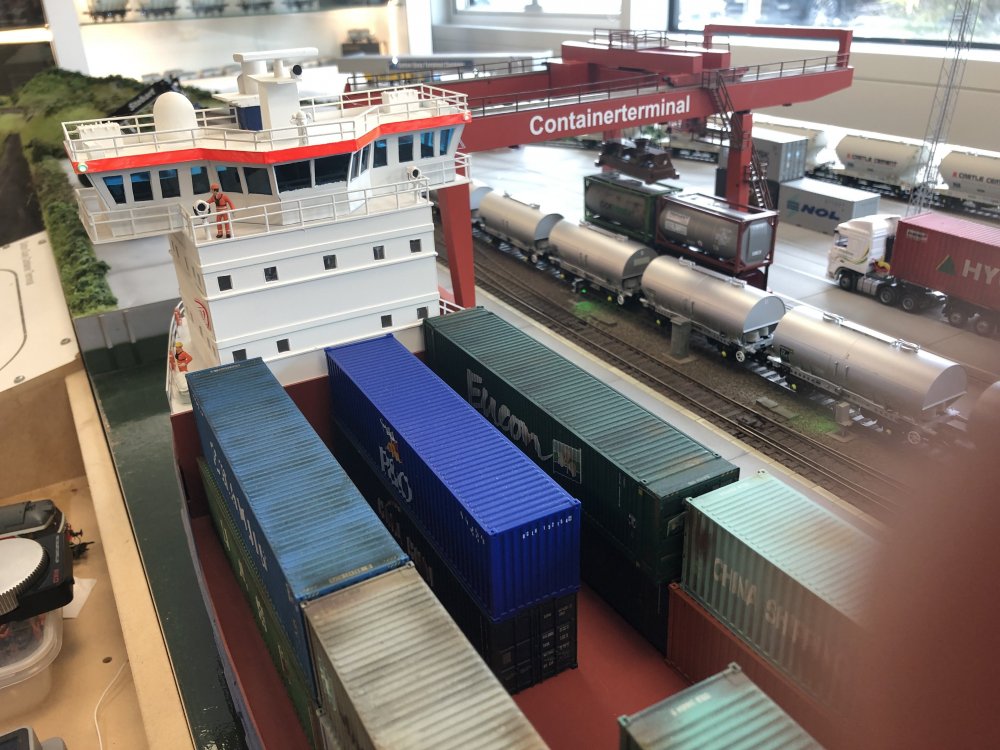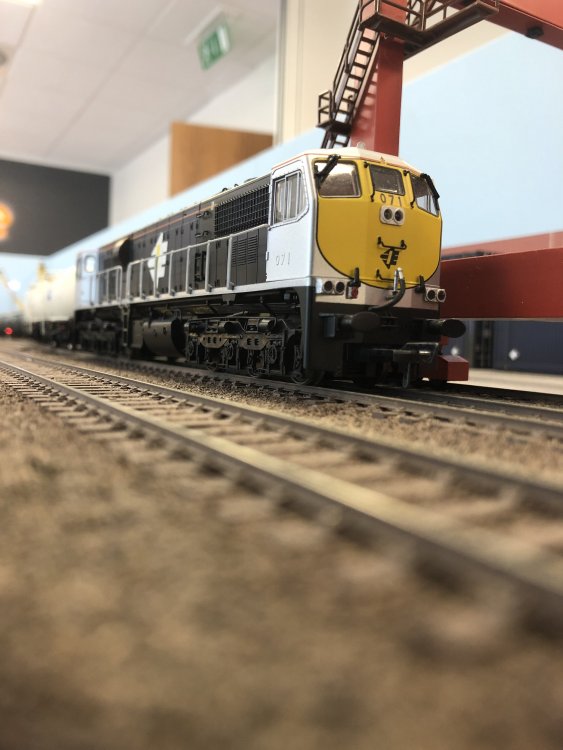-
Posts
15,915 -
Joined
-
Last visited
-
Days Won
394
Content Type
Profiles
Forums
Events
Gallery
Blogs
Community Map
Everything posted by jhb171achill
-
CIE Laminate Coaches - Worsley Works - ECMbuild in 4mm
jhb171achill replied to murrayec's topic in Irish Models
Looking amazing, Eoin, can't wait to see finished job! Excellent finish. -
Absolutely superb - thanks. If mine exudes half that realistic atmosphere I'll be happy.... Presumably ferts will feature at some stage!
-
That rake of laminates... could we see a closer look? Are they Silverfox?
-
Great to see it all back, folks. Well done to all concerned.
-
Possibly, yes..... I recall seeing coaches in scrap lines. The green was by now a flattish shade - hard to describe. The lighter green was by this stage showing a greenish creamy colour, rather than white as such. Maybe some sort of creamy colour..... I'll experiment with paints at some stage. I also seem to remember that if really worn, it showed as streaky, like the paint was washing off to show the darker colour underneath. On my first visit to Inchicore (mid 60s?) I wish I'd had a camera... there was all sorts of stuff about in scrap lines...!
-
That's a suitably shabby appearance indeed! Postal vehicles rarely seemed to be at the top of the queue when men with paintbrushes were about! I have an old Hornby coach which with a bit of alteration will look like one of the last pair of WLWR brake 3rds. I have painted it a flattish green to make it look like the earlier dark green turning as shabby as yours. The green looks right for this, but I am not sure how to go about adding the "eau-de-nil" lining to match the faded shabbiness - indeed, this lighter shade on a badly-weathered coach seemed to fade even more than the dark green. I had thought of approaching a manufacturer of lining to make a batch of "weathered" lining, but probably too much effort and expense for too little use. I will eventually have no more than two or three vehicles that i would want to look as worn as that.
-
Nice trackwork - great potential! I'm fiddling about with ideas for a terminus at the moment - I thought a 5'3" version of Letterkenny's track plan might be a good size for a layout.
-
According to jhb171Senior, his father considered the 400s a mixed bag - good ones and bad. Doubtless, as you say, due to the many variations as time progressed.... I wondered myself why not more 500s.....
-
At IRM Towers, many gems could be seen when I made a business call. The choccy bikkies were good too..... 9D376EAB-D0F9-4ADC-AEDF-E3E2F5888F3A.MOV 28C5614A-0336-4873-B395-FC37BE6E7407.MOV
- 4 replies
-
- 12
-

-

-
Yes, Dive, I have two black’n’tan 141s, and I’ll have both anA and a 121 in that livery too. Engines in the old BnT livery were around almost until 1980 - when I did much travelling in 1976/7 they were everywhere. So BnT livery haulage of these is perfectly appropriate, as are Supertrain and Tippex liveries. If the budget holds, I’ll probably take six or eight..... Will you be able to buy pallets separately in order to have them sitting on loading bays ready to be loaded, or having been unloaded?
-
They're well out of my era but............. might have to get some! (And my guilty secret might be running them behind a J15.....!)
-
Worsley do a G class kit, and Silverfox do s RTR G..... A “D” can be reasonably “botched” from a British 08. But a Murphy/IRM-standard RTR “E” would be the thing to have. I would take two.....
-
A couple of carriages on the T & D were rebuilt as brakes. I think there were two thus treated, though I’d have to check, but possibly three. One, as seen above, retained windows but the other as also seen above, didn’t. The Great Southern rebuilt them as goods brakes on the T & D, and following its closure in 1953, one was transferred to the C & L.
-
That is a thoroughly superb job!
-
County Donegal bus release (Oxford)
jhb171achill replied to minister_for_hardship's topic in Bus models
Nice looking thing. I wonder if they would do a couple of standard CIE 1950/60s types....? -
Never a truer word in the history of the internet. I live in hope for this too! Don't start me on druggies and joyriders! When I hear of the likes of these wiping themselves out I rejoice; “the world is now a better place”!
-
It was a standard GSWR design, used almost only by them. The solitary example of another company using this design that I’m aware of was the T & D. I know from photos that there were at least 3 or 4 examples. My father photographed one at Castlegregory when he went there just before the line closed. Tralee has another at Basin Halt (I think), and there was one at some level crossing.
-
Great stuff!
-
Yes, Woolwiches and “A”s. As for train make-up, I don’t know exactly, but any wagons would be fitted ones, obviously. Coaching stock on the Midland main lines would have been bogie corridor stock by the 1950s, both of old wooden varieties (no two alike!) and by degrees Bredins, laminates and PRs. Six wheel passenger brakes would still feature large, of course, along with new tin vans. Maybe someone else can comment on exact make up of “perishables”?
-
Depending on how sturdy my wallet is at the time, I would LOVE a Midland "cattle engine". Leslie is about to do CIE cattle wagons, so a long line of those with a CIE brake van at the back - perfect. Coming sooner, I have to deal with three 121s, four A's, ten Provincial cattle wagons and a G2 2.4.0 from Mayner - coming on top of two of the excellent J15s from Roderick........ $£$€€€€€ but WELL worth it.
-
They’d need to remove vegetation from this and other old buildings on the railway of the stonework will be irreparably destroyed.
-
Internal layout now finalised and approved by the design team. Out of the vast collection of Fry’s stuff, both models and “railwayana”, it has been separated into several groups. 1. Items for rotating display which are (a) primarily relevant and (b) in good condition. 2. Items not in good condition, but restorable. Will be restored by degrees and displayed. 3. Items either irrelevant or in very poor, incomplete or damaged condition. Subject matter for display boards is now partly chosen, with captions being written up, while there is still some display material to be chosen and illustrations chosen out of a “pool” of relevant material. Some illustrations have been chosen but await permission to display from copyright holders. The layout is under construction.
-
That’s a fake, without a doubt.
-
Yes, there were several variations. Michael McMahon’s book on GSR locos has the best account I’ve seen of GSR tenders. This may be taken as the definitive work on such things.
.png.c363cdf5c3fb7955cd92a55eb6dbbae0.png)


